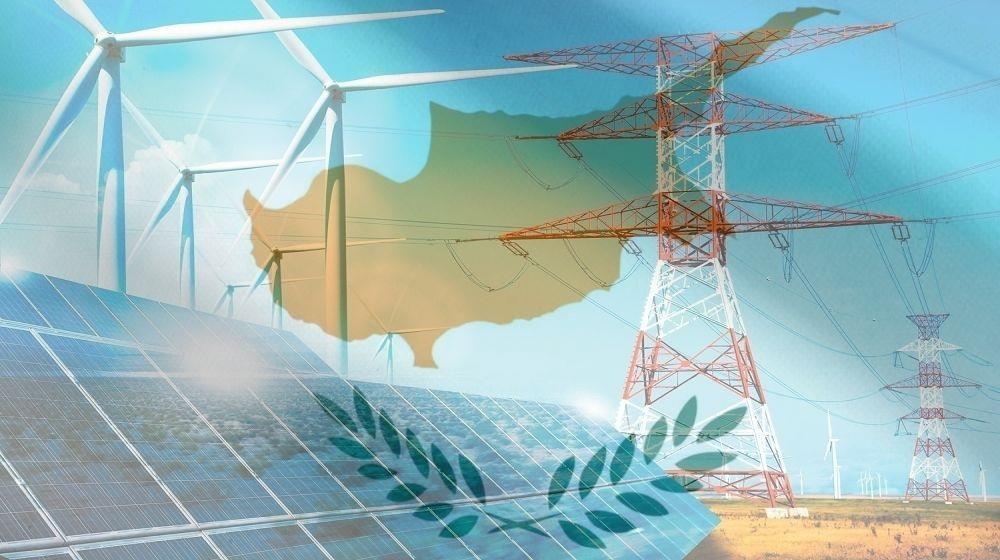The energy market in Cyprus entered a new era on 1 October, with the start of the commercial operation of the Competitive Electricity Market (CEM), in which, at the initial stage, 17 participants have joined.
This is essentially the first step towards healthy competition in the energy market, since through the operation of the CEM, it is expected that the distortions that existed during the transitional period will be eliminated, offering consumers the opportunity to choose the electricity provider that best meets their needs.
It is noted that the benefits for consumers - mainly - although they will not be immediately visible, are estimated to be quite significant, since consumers' choices are increasing and they, as of 1 October, can freely choose the supplier and the pricing that best meets their needs.
Speaking to InBusinessNews, Electricity Market Operation Manager at Transmission System Operator Cyprus, Constantinos Varnava, initially explained that the electricity market is the framework within which producers sell and suppliers buy energy, pay fees for the services necessary for the operation of the electricity system and utilities and are cleared for the energy they inject or absorb from the electricity system, always according to their measurements.
According to Varnava, consumers and self-producers participate indirectly in the electricity market, through their suppliers, as active customers or as members of energy communities.
He also emphasised that market participants, after securing the appropriate license from the Cyprus Energy Regulatory Authority (CERA), acquire various properties, the most important of which are RES Producers or Cumulative Representation Bodies or RES Producers for the production and sale of energy and Suppliers for the purchase of energy and its resale to consumers (end customers) in the retail market.
The three individual markets
Asked to clarify the above references, Varnava pointed out that essentially the electricity market includes three sub-markets, with different purposes.
As he explained, one is the Forward Market, in which participants enter into bilateral contracts at prices and terms that they determine themselves, while the second is the Day-Ahead Market, in which suppliers will supplement the energy they have purchased forward to satisfy their customers' demand for the next day.
After also clarifying that sales offers are submitted for every half hour, he indicated that the most expensive sales offer determines the price at which all offers are paid (limit price).
Regarding the third sub-market, Varnava said that this is the Real-Time Balancing Market, which will operate on a 24-hour basis and in which the TSO, as the system operator, will accept offers from participants to increase production or consumption, so that they are constantly balanced and the electrical system operates safely, underlining that offers will be submitted the previous day by 4pm.
The differences between transitional regulation and a competitive market
Asked about the differences between the Transitional Regulation that was in effect until 30 September and the Competitive Market that came into operation on 1 October, Varnava said that in the Transitional Regulation, the clearing period is one month while in the Competitive Market it is half an hour.
Also, he continued, for the Transitional Regulation, prices are uniform for the entire month and the different value of energy with the fluctuation of supply and demand is not recognised, while producers and suppliers are not responsible for balancing their energy every half hour.
The benefits and increased options
Regarding the benefits of the operation of the competitive electricity market, Varnava, after clarifying that "the benefits of the competitive market to consumers will not be visible from the first day of its operation," underlined that the market is a necessary element for a series of other actions that will benefit consumers.
Specifically, and in relation to suppliers, he stated that by receiving wholesale market price signals and with appropriate consumption meters, they will be able to structure pricing for their customers, tailored to their needs.
He pointed out that competition between suppliers will bring pricing with multiple options to consumers, such as fixed pricing, pricing with fuel price adjustment, dynamic pricing where the customer will pay according to the wholesale market price, etc.
Therefore, he emphasised, "consumers' choices are increasing and they can freely choose the supplier and pricing that best meets their needs."
"Through supplier pricing and with appropriate consumption meters that record consumption every half hour, such as smart meters, pricing can be structured to reflect competitive market prices (wholesale market) in consumption (retail market)," he explained further, noting that "consumers will then be able to change the time they consume energy in order to take advantage of low prices in the competitive market."
In addition to the above, Varnava added, "consumers who have their own production either individually, as active customers or 'cooperatively' as energy communities can also participate indirectly in the market."
"Consumer empowerment is a key element of the European Union's energy model, which Cyprus also follows," he explained.
Additionally, Varnava said, "investors, analysing the opportunities offered by price differentiation, will make the appropriate investments, such as storage, since they will be able to buy cheaply during times of high production from renewable sources and sell more expensively during times of high demand."
With 17 participants
Asked about the number of participants in the competitive electricity market, the Electricity Market Manager said that in the first stage, 17 participants have joined the electricity market, of which two are Producers - one of them with a "virtual unit", with a capacity of less than 5 MW -, ten are Suppliers, nine RES Cumulative Representation Bodies and three RES Producers.
Regarding the EAC, Varnava said that EAC Generation and EAC Supply are two of the Participants in the EAC and noted that for both of these EAC activities "special regulations and restrictions will apply because they hold a dominant position in the market."
Finally, according to Varnavas, most of the participants in the Competitive Market are already active in the Transitional Regulation of the Electricity Market, which has been in operation since 2021 and in which approximately 10% of total production and consumption is traded.
EMA: The opening of CEM is the first step towards healthy competition
It is worth mentioning that the Electricity Market Association (EMA) on the occasion of the opening of the CEM emphasises that it is the first step towards truly healthy competition in the energy market in Cyprus.
As it states in a statement, "its operation is expected to eliminate the distortions that existed during the transitional period, offering consumers the obvious: the ability to choose the electricity provider that best meets their needs."
He adds that activating the market will strengthen competition and promote innovation, while simultaneously creating conditions for transparency and improving the quality of the services provided.
“Independent suppliers now have the ability to shape their own energy mix, combining conventional generation with Renewable Energy Sources. This allows them to offer flexible tariffs, with lower charges during peak hours and higher rates in the evening,” he further indicates, noting that “in this way, energy consumption is encouraged when there is an abundance of green generation, a better balance between demand and supply is achieved, RES cuts are limited and, ultimately, the overall cost of electricity for consumers is reduced.”
At the same time, EMA emphasizes that the CEM alone is not the answer to addressing energy costs, underlining that "in order to achieve the right transition, institutional stability, transparency and sufficient adaptation time are required."
"That is why its success will not be judged solely by its launch, but by whether all the necessary reforms in the energy sector in our country will be implemented, including the arrival of natural gas, the upgrading of the network and the implementation of storage projects. Because only in this way will it be possible to ensure full competition, strengthen the functioning of the market and objectively evaluate its contribution to reducing electricity prices, which is the goal not only of the state, but also of private producers and suppliers," EMA points out.
Finally, the Association emphasises that "public and private sector cooperation is crucial for addressing today's challenges", underlining that it remains firmly committed to its commitment to operating as a reliable and institutional partner, actively contributing to the formation of a coherent, stable and long-term energy strategy for Cyprus.
(Source: InBusinessNews)









